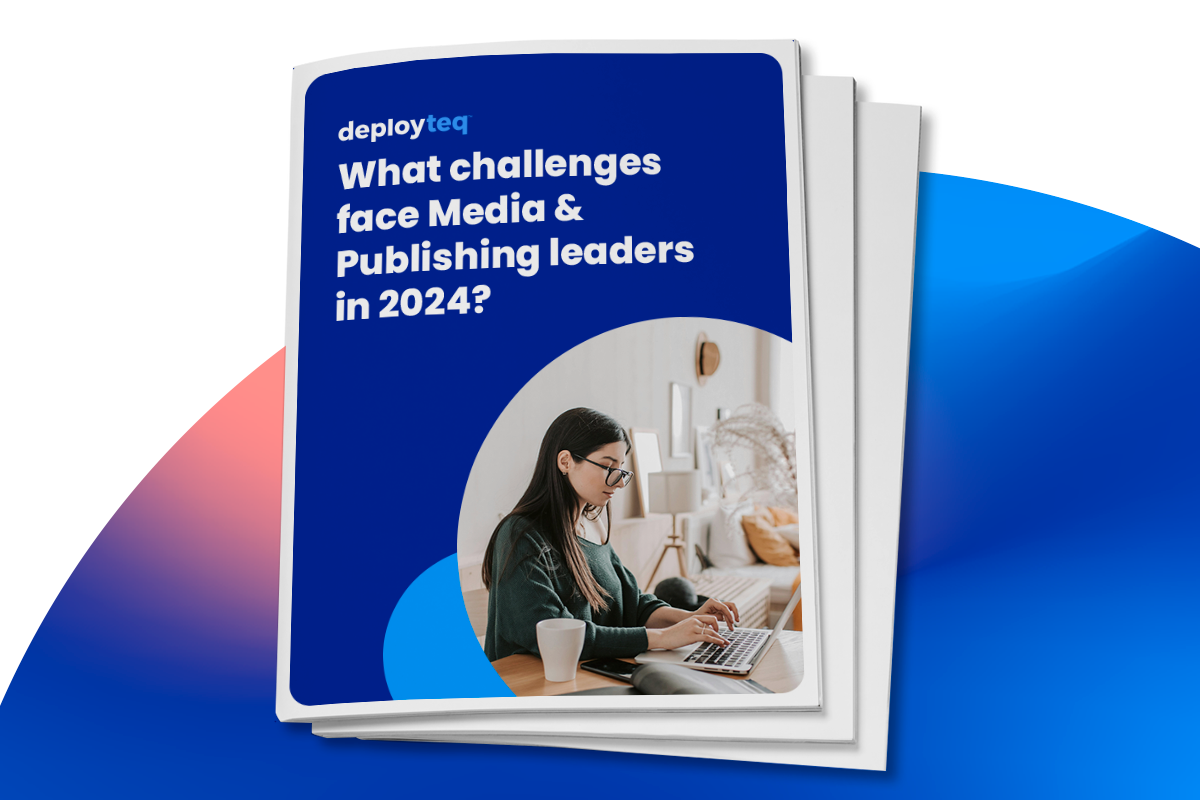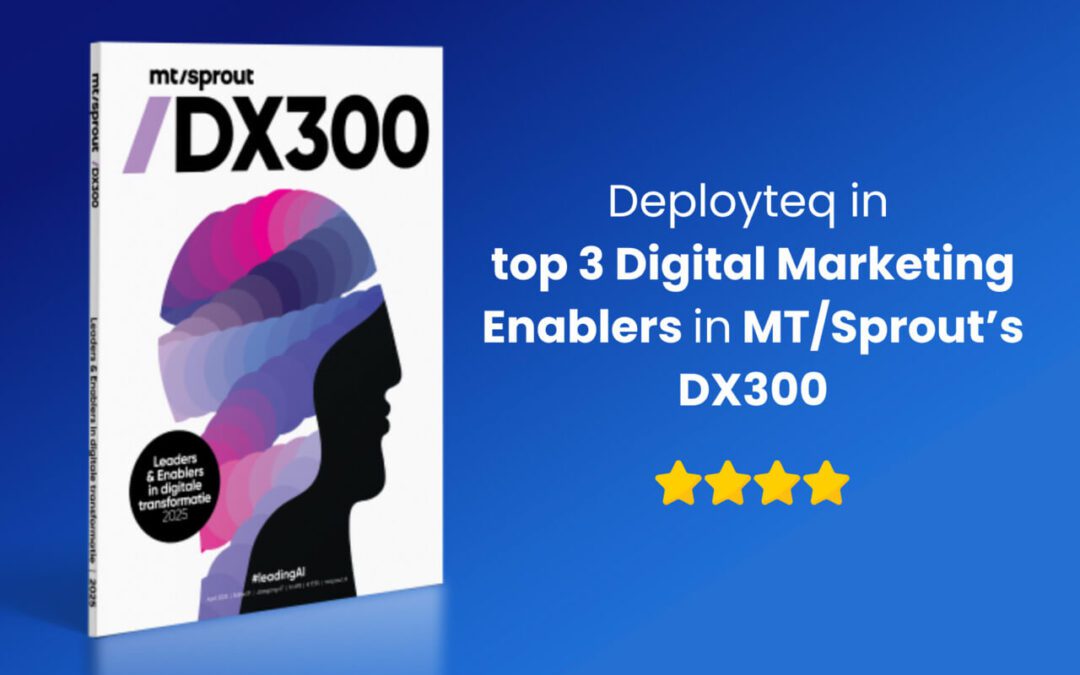As we move through 2024, the publishing and media industry is encountering a unique set of challenges that are reshaping its landscape. These challenges range from the escalating influence of artificial intelligence in content creation to the ongoing pressures of adapting to digital transformation and evolving consumer preferences.
Additionally, the industry is grappling with the aftermath of global events such as the pandemic and geopolitical conflicts, which have profound implications for journalism and media consumption.
Understanding these challenges is crucial for industry players to navigate this complex environment successfully. It enables them to innovate, remain competitive, and effectively meet the changing needs of their audience, thereby ensuring sustainability and growth in a rapidly evolving digital era.
Challenges the industry has been facing
Over the past few years, the publishing and media industry has faced a multitude of challenges and transformations. The COVID-19 pandemic significantly impacted population health and economic stability, affecting employment and exacerbating health inequalities. Concurrently, the rise of artificial intelligence (AI) has reshaped many sectors, introducing new efficiencies and altering the landscape of work and creativity.
Advertising, a key driver of economic activity, has also evolved, adapting to changing consumer behaviours and technological advancements. Additionally, changes in Google’s algorithms have had a significant impact on online visibility and digital marketing strategies. These diverse factors, from global health crises to technological innovations, have collectively influenced the direction and operations of industries worldwide.
- The cost of paper and printing
The publishing industry, particularly newspapers and magazines, is undergoing significant changes due to the rising paper and printing costs. In 2023, paper prices surged by 65%, a consequence of the global paper shortage that began in 2020. This increase has made the traditional model of selling printed materials in bulk increasingly unsustainable. Many publications have struggled under this economic pressure, leading to closures in some cases.
Adapting to these challenges, some publishers are rethinking their strategies. For instance, NME, previously a monthly music magazine, has shifted its approach. Instead of frequent, lower-priced issues, they now offer bi-annual editions priced at £10, targeting collectors and enthusiasts, particularly in the vinyl market. This model reduces the need for mass production and distribution in physical stores, offsetting the higher material costs by requiring fewer sales to cover expenses. Such innovations reflect the industry’s need to evolve in response to the changing economic landscape.
- AI
The impact of AI, particularly Large Language Models (LLMs) like ChatGPT, on the publishing industry is multifaceted. AI has revolutionised the sector by automating editorial tasks, assisting in research, and streamlining content creation and distribution. This has led to improved productivity and efficiency, which is crucial in an industry facing significant challenges. However, the use of AI in publishing also raises critical ethical and legal issues, particularly concerning plagiarism, copyright infringement, and the preservation of human creativity.
There is an ongoing debate about the ethical use of AI in publishing. The key is finding a balance between leveraging AI for assisted research, editing, and automation, and mitigating the risks of plagiarism and copyright infringement. Concerns have been raised about AI’s ability to create content that may inadvertently plagiarise existing works or use copyrighted material without proper authorization.
Notable court cases highlight these issues. One involves five authors, including Sarah Silverman, in a lawsuit against OpenAI and Meta for copyright infringement over work scraped from unauthorised pirated sites. Another case features two authors, Mona Awad and Paul Tremblay, suing OpenAI for training on their work without consent, credit, or payment. These cases underscore the legal complexities surrounding AI’s use in publishing and the need for clear guidelines and ethical standards.
The discussions about suitable use cases for AI in publishing are ongoing. The industry is grappling with where to draw the line between beneficial use and ethical infringement. While AI can be used ethically, it requires careful consideration of copyright laws, the rights of original creators, and the potential impact on human creativity. The resolution of these court cases and the development of industry standards will be crucial in shaping the future role of AI in publishing.
- Plagiarism
Plagiarism in the digital environment, especially among self-publishers, poses significant challenges. The low barriers to self-publishing, particularly on platforms like Amazon, make it easier for plagiarism to slip under the radar. This ease of access to publishing tools has inadvertently facilitated the unauthorised use and replication of original works. As a result, publishers and authors can suffer revenue loss due to plagiarised content being sold without their consent.
The issue is compounded by the fact that existing self-published works are more susceptible to being plagiarised and then resold on digital platforms like Amazon. The integration of AI into this process further complicates matters. AI can be used to lift sections of existing works or to make slight alterations, enabling quick turnaround for self-publishing. This practice not only undermines the original authors’ rights but also dilutes the quality and integrity of published content.
While these plagiarised works can be taken down once reported, there is currently no robust system in place to prevent them from being published and potentially earning revenue in the first place. This lack of preemptive measures against digital plagiarism highlights a significant gap in the self-publishing ecosystem, calling for more stringent checks and balances to protect intellectual property and maintain the authenticity of published content.
- The rise of audio media – podcasting and audiobooks
The rise of podcasting and audiobooks has significantly impacted the publishing and media industry, marking a shift towards embracing multimedia as users diversify their information consumption habits. This trend reflects a growing preference for different content formats, including short-form videos and longer-form audio, across various platforms. In the UK, podcasting has experienced remarkable growth, with an estimated 21.2 million listeners in 2022, and a substantial £46 million spent on podcast advertising.
This trend presents a valuable opportunity for publishers to transform existing content into podcast and audiobook formats, capitalising on the growing audience and potential revenue streams. News publishers, in particular, have found that investing in podcasting can significantly enhance their brand’s influence and reach. The ability to present baseline information in diverse ways caters to the varied preferences of modern audiences, who often seek content that can be consumed on the go or during multitasking activities.
However, venturing into podcasting and audiobooks involves additional costs and resources. Publishers may be concerned about the return on investment, considering the expenses related to production, marketing, and distribution of audio content. Despite these concerns, the ongoing growth and popularity of these formats suggest that they are becoming increasingly integral to the media landscape, offering publishers new avenues to engage with audiences and expand their reach.
- Self-publishing
The rise of self-publishing has significantly transformed the publishing and media industry by lowering the barriers to entry. It has become much easier for individuals to publish their work digitally, allowing authors to bypass traditional gatekeeping mechanisms of the publishing world. This democratisation of publishing enables authors to build their brand and following, particularly through social media platforms like TikTok’s BookTok, where they can directly engage with their audience, or be recommended within a passionate community.
Self-publishing options are typically more cost effective than traditional publishing routes. They often bypass several stages of the traditional publishing process, such as rigorous proofreading, editing, copyediting, design, and the complexities of physical publishing. This streamlined approach, however, might affect the quality of the final product in terms of polish and refinement.
Additionally, the self-publishing market has opened avenues for crowdfunding books, especially useful for authors with a substantial following. This method allows authors to gauge and harness the interest of their audience even before the book is published.
The self-publishing landscape has also given rise to underdog success stories, such as Beth Reekles and Anna Todd, who started as fanfiction writers and leveraged the self-publishing route to achieve mainstream success. Their journeys highlight the potential of self-publishing in discovering new voices and stories that might have been overlooked by traditional publishing channels.
- Digital subscription and membership models
The rise in digital subscriptions and memberships in the publishing and media industry marks a significant shift in revenue models and content creation strategies. This trend is driven by the industry’s need to find sustainable revenue sources beyond traditional advertising, which has seen a decline. A large majority of publishers (80%) are investing in subscription and membership models, recognizing their potential for stable and recurring revenue.
The impact on revenue is notable. For instance, The Economist group reported that subscription and reader revenue accounted for more than 60% of its profits, a significant increase from less than 50% in 2010. This shift towards subscriptions has been a bright spot in the industry, offering a more predictable and direct income stream compared to the volatility of ad revenues.
In terms of content creation, this model encourages publishers to focus on quality and value, aiming to retain subscribers over the long term. It leads to a more audience-centric approach, where content is tailored to meet the specific interests and needs of the subscriber base. This trend is reshaping how content is produced, distributed, and monetized, leading to a more sustainable and audience-focused publishing environment.
- The decline of traditional referral sources
The decline of traditional referral sources, particularly from social media and search engines, is reshaping the landscape of news consumption and distribution. The reach of print and online newspapers has notably decreased from 47% in 2020 to 38% in 2022 among adults, indicating a shift in how people access news. While social media is becoming a more prevalent source of news, it doesn’t necessarily translate into increased referrals to news websites. There’s been a reduction in referrals from major social media platforms like X (Twitter) and Facebook, and anticipated changes resulting from the introduction of Google’s Search Generative Experience (SGE) are expected to further decrease traffic referrals to these sites.
To adapt to this change, news organisations need to focus on building a community rather than relying solely on external traffic referrals. Cultivating a loyal and engaged following is key. Strategies like developing newsletters and other direct communication channels can help maintain a consistent connection with the audience. This approach not only helps in retaining readers but also in creating a dedicated base that is less dependent on the fluctuating algorithms of social media and search engines. By fostering direct relationships with their audience, news organisations can create a more stable and controlled environment for content distribution and engagement.
- Local journalism
Local newspapers and publishers are facing several significant challenges. One of the primary issues is falling revenues, which can lead to a decline in the quality and quantity of journalism that is vital to local communities. Additionally, the ownership structure of many local newspapers, often controlled by distant, corporate entities, can result in a lack of investment in quality journalism and a disconnect from the communities they serve.
Several innovative approaches can be adopted to revive local journalism. Leveraging digital platforms and machine learning can help publishers identify likely subscribers and inform journalists about audience preferences, enabling more targeted and relevant content. Collaboration and support within the industry, as well as exploring new revenue models such as reader revenues, memberships, and subscriptions, can provide a more sustainable financial model. These strategies can help local news media pivot to a more audience-centric approach, ensuring their survival and continued relevance in their communities.
Opportunities for the Publishing and Media industry in 2024
With evolving technological trends and changes in consumer behaviour, the publishing and media industry stands at a pivotal juncture, full of opportunities.
This year promises a landscape where immersive experiences with augmented reality (AR), virtual reality (VR), and AI-powered personalisation are set to redefine content consumption and engagement. Leaders from major media houses are gearing up to navigate these changes, focusing on harnessing these technological advancements to create more engaging, relevant, and personalised content for their audiences.
The industry is also witnessing a growing demand for audiobooks and eBooks, indicating a shift towards more accessible and diverse formats of content delivery. These trends present a unique opportunity for the industry to innovate, expand its reach, and enhance its revenue streams in the digital era.
- The shift to event-based engagement
Publishers are increasingly using events as a strategic tool for audience engagement and revenue generation. This approach involves a significant mindset shift, particularly in engaging users through their most frequently used devices, like mobile phones. For news publishers, this is crucial since many users now get their news updates from social media rather than directly from news websites.
Automated marketing plays a pivotal role in this strategy. It involves triggering communications with customers based on their interactions or stages in the customer lifecycle. For instance, if a user is reading a particular article or viewing a product, automated systems can respond in real-time, enhancing engagement and potentially increasing conversions.
Events also facilitate high engagement rates by capturing and responding to customer actions immediately. This responsiveness is key in a digital environment where user attention is fleeting and diverse. Moreover, events allow for cross-channel marketing integration, recognizing that users are not confined to a single website or app. They are constantly navigating between different digital channels like email, texts, and push notifications. By integrating these channels, publishers can create a more cohesive and engaging user experience, ultimately driving both engagement and revenue.
- Building brands and communities
Personal branding has become increasingly important for authors and journalists in today’s digital age. It serves as a powerful tool for establishing a unique identity, connecting with audiences, and enhancing career opportunities. A strong personal brand can help authors and journalists stand out in a crowded market, attract a dedicated following, and even drive direct revenue.
Notable examples of successful personal branding include journalists like Taylor Lorenz, Ezra Klein, Bill Simmons, Sophia Smith Galer, and Nate Silver, who have leveraged their audiences to build media empires and influential careers.
Key strategies for community building and engagement involve building out social media profiles and engaging with specific audiences. Platforms like TikTok have proven to be effective for authors, as seen with the BookTok phenomenon. Books that gained popularity on TikTok sold 2.2 million copies in the first quarter of 2022 in the UK, demonstrating the power of social media in driving book sales and audience engagement. Authors and journalists can use these platforms to share content, interact with their audience, and build a community around their work. This approach not only helps in increasing visibility but also fosters a deeper connection with the audience, which is crucial for long-term success and influence in the industry.
- ePublishing
ePublishing is transforming the publishing industry due to the rapid advancement of technology and changing consumer preferences. The rise of electronic book formats, such as eBooks and audiobooks, has significantly altered how content is consumed and distributed. This digital transformation allows for greater accessibility and convenience for readers, who can now access a wide range of content from anywhere, at any time.
The growth in eBook sales, which saw an 11.86% increase in 2021, highlights the shifting consumer preference towards digital formats. Additionally, the integration of social media in publishing has opened new avenues for marketing and audience engagement, further driving the industry’s digital shift. The Internet, printing-on-demand, and eBooks are the main drivers of change, offering publishers new ways to reach and interact with their audience.
This transformation is not without its challenges, as the publishing industry must adapt to the Internet age and the evolving expectations of a tech-savvy audience. However, the move towards ePublishing and digital book publishing represents a significant opportunity for innovation, expanded reach, and potentially increased revenue for publishers willing to embrace these changes.
- Data
Using data to create opportunities and identify compelling content is increasingly vital for the publishing and media industry. Data analysis allows publishers to understand their audience’s preferences and behaviours more deeply. By analysing data related to consumer interactions, content performance, and market trends, publishers can tailor their content to resonate more effectively with their target audience.
Data-driven strategies enable publishers to personify consumers, making content more relevant and engaging. This approach can involve sophisticated capabilities like predictive analytics and audience segmentation, which help in crafting content that meets specific audience needs. Furthermore, data-driven stories have the potential to attract significant social media attention, leveraging fresh data and infographics to spread content virally.
Incorporating data at the centre of decision-making processes offers tremendous benefits to news media companies. It aids in creating a more customer-centric approach, ensuring that content is not only relevant but also timely and impactful. Publishers using data to form new ideas gain the advantage of being proactive rather than reactive, staying one step ahead in a rapidly evolving industry.
In 2024, the publishing and media industry will be navigating through a transformative phase, marked by the growing influence of artificial intelligence in content creation and the challenges of digital transformation. The industry is also adapting to the aftermath of global events like the pandemic, rising paper costs, and AI, all of which have reshaped journalism and media consumption.
Despite these challenges, opportunities arise in audio media, personal branding, and community engagement through social media. The industry is evolving, creating new avenues for audience engagement and media consumption.











